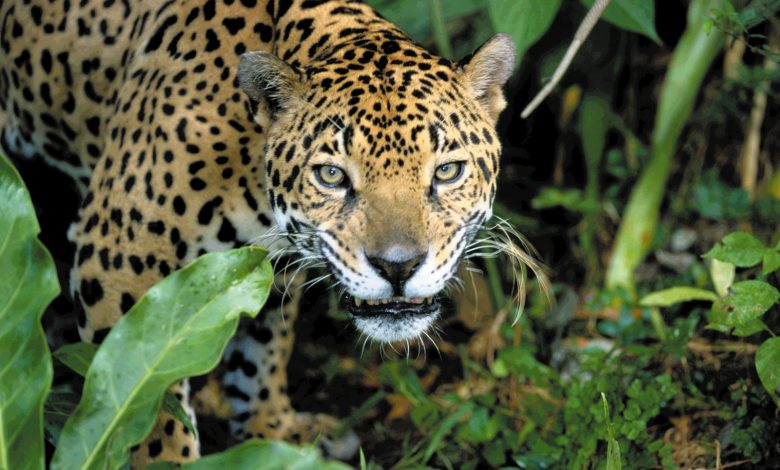Jaguar

The jaguar (Panthera onca) is a large felid species and the only living member of the genus Panthera native to the Americas. Its distinctively marked coat features pale yellow to tan colored fur covered by spots that transition to darker rosettes on the sides. With a body length of up to 1.85 m (6 ft 1 in), it is the largest cat species in the Americas and the third largest in the world. Its powerful bite allows it to pierce the carapaces of turtles and tortoises, and to employ an unusual killing method with mammals: it bites directly through the skull of prey between the ears to deliver a fatal blow to the brain.
It inhabits a variety of forested and open terrains, but its preferred habitat is tropical and subtropical moist broadleaf forest, wetlands and wooded regions. The jaguar is adept at swimming and is largely a solitary, opportunistic, stalk-and-ambush apex predator that is not preyed upon. As a keystone species, it plays an important role in stabilizing ecosystems and regulating prey populations.
The jaguar most likely entered the Americas in the early Pleistocene via the land bridge that once spanned the Bering Strait between Asia and North America. Jaguar fossils excavated in the Americas date back to 130,000 years BP. Today, the jaguar’s range extends from extreme southern Arizona in the United States across Mexico and much of Central America, the Amazon rainforest and south to Paraguay and northern Argentina.
The jaguar is listed as Near Threatened on the IUCN Red List, and its population is declining. It is threatened by loss and fragmentation of habitat and poaching for trade with its body parts. Although international trade of live jaguars or their body parts is prohibited, the cat is frequently killed, particularly in conflicts with ranchers in Central and South America. Priority areas for jaguar conservation comprise 51 Jaguar Conservation Units (JCUs), defined as large areas inhabited by at least 50 breeding jaguars. The JCUs are located in 36 geographic regions, ranging from Mexico to Argentina.
The jaguar has featured prominently in the mythology of numerous indigenous peoples of the Americas, including those of the Maya and Aztec civilizations.
